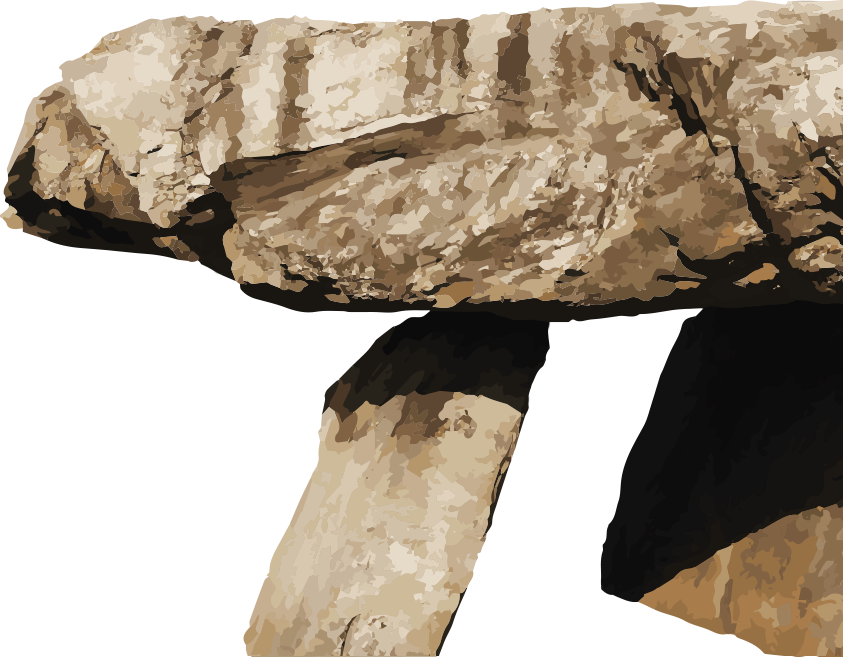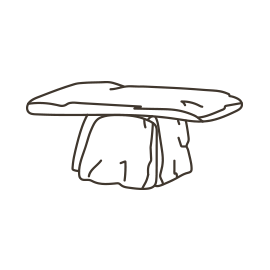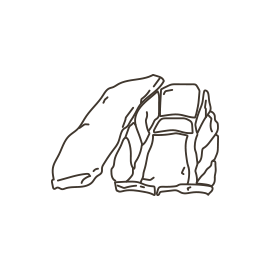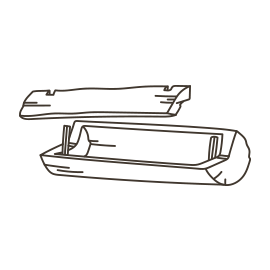-

Handaxe
700,000 BC
Paleolithic Age
-

Comb-pattem Pottery
10,000 BC
Neolithic Age
-

Lute-shaped Bronze Dagger
1,500 BC
Bronze Age
-

Thin Bronze Dagger
300 BC
Iron Age
Our ancestors, including ancient people, were incredibly meticulous observers, creative artists,
industrial designers who solved the inconveniences of daily life in amazing ways.
The Songam Art Museum neatly and systematically organizes the wisdom and time of ancient landscapes.
The panorama of time behind the glass passage allows us to meet the brilliant days of ancient artists and craftsmen.
Introduction video of
Songam Art Museum
Meeting
the wisdom and hopes
left by old life.
When you enter the Songam Art Museum on the first floor, you will first see large pottery Jar Coffins made of clay.
This artifact announces the beginning of the exhibition of ancient pottery and handicrafts.
After passing the Jar coffins, you can see the changes in ceramic art by era, from ancient pottery to Goryeo Celadon and Buncheong Ware, Joseon White Porcelain.
In addition, Buddhist statues, Bodhisattva statues, and folk crafts, including Buddhist handicrafts, allow you to meet the daily life and faith of the Joseon era.
1st-floor
exhibition room
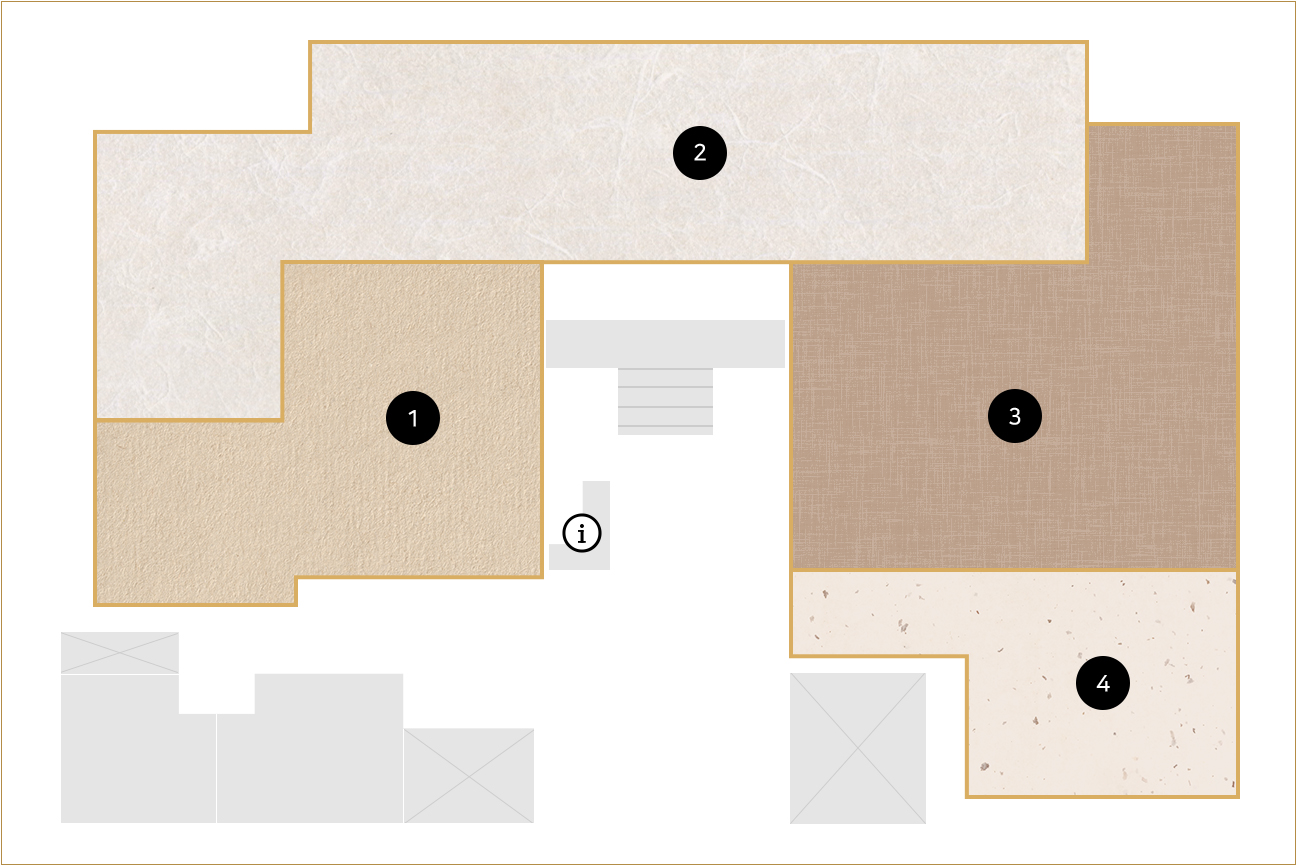
※ Click on the number to see a description
of the exhibition room.
Ancient Gallery
Various pottery made from the Bronze Age to the Three Kingdoms period are exhibit. In particular, the Jar Coffins displayed in various sizes and shapes demonstrate the characteristics of each era in comparison.
Ceramic Gallery
The history of Korean ceramics is succinctly displayed, from Goryeo Dynasty's pottery and celadon to Joseon Dynasty's Buncheong Ware and white porcelain. Exhibits of various and wide-ranging ceramics make it possible to naturally learn the techniques and types of pottery that represent each era, such as inlaid celadon, buncheong ware, pure white and blue and white porcelain.
Buddhist Gallery
Various Buddhist sculptures from the Joseon Dynasty, such as Wooden Seated Amitabha Buddha, Wooden Seated Bodhisattva, and a Vajrapani, are displayed, along with various Buddhist handicrafts used in Buddhist rituals in temples and homes, such as incense burners and candlesticks. Here, you can find the roots of our faith and folklore, including statues of the Statue of Twelve Zodiac Signs that are still commonly seen today, as well as Statue of Buddha and bodhisattva.
Folk Craft Gallery
Various everyday items used in the lives of scholars and women during the Joseon dynasty are displayed, including writing brushes, ink stones, and ink sticks, as well as various tools and furniture used for daily life and decoration. The exhibition of these diverse and small but colorful items allows you to imagine the lives of our ancestors, including their religion, faith, and leisure activities.
Meeting
the scenery of the era
left by art
When you go up to the second floor, you will encounter various paintings from the Joseon Dynasty to the modern era.
The paintings contain many stories about the history, religion, and philosophy of time.
This is because the social and cultural interests of the people of that era and the spirit of the times are reflected directly in the paintings that were popular at the time.
Therefore, by looking at the paintings, you can understand the perspective of the people of that time and how they viewed the world.
The detailed paintings of Pyeongyang Fortress, the powerful paintings of Gyeomjae, and the folk paintings that contain free wishes kindly explain where their art came from.
2nd floor
exhibition room
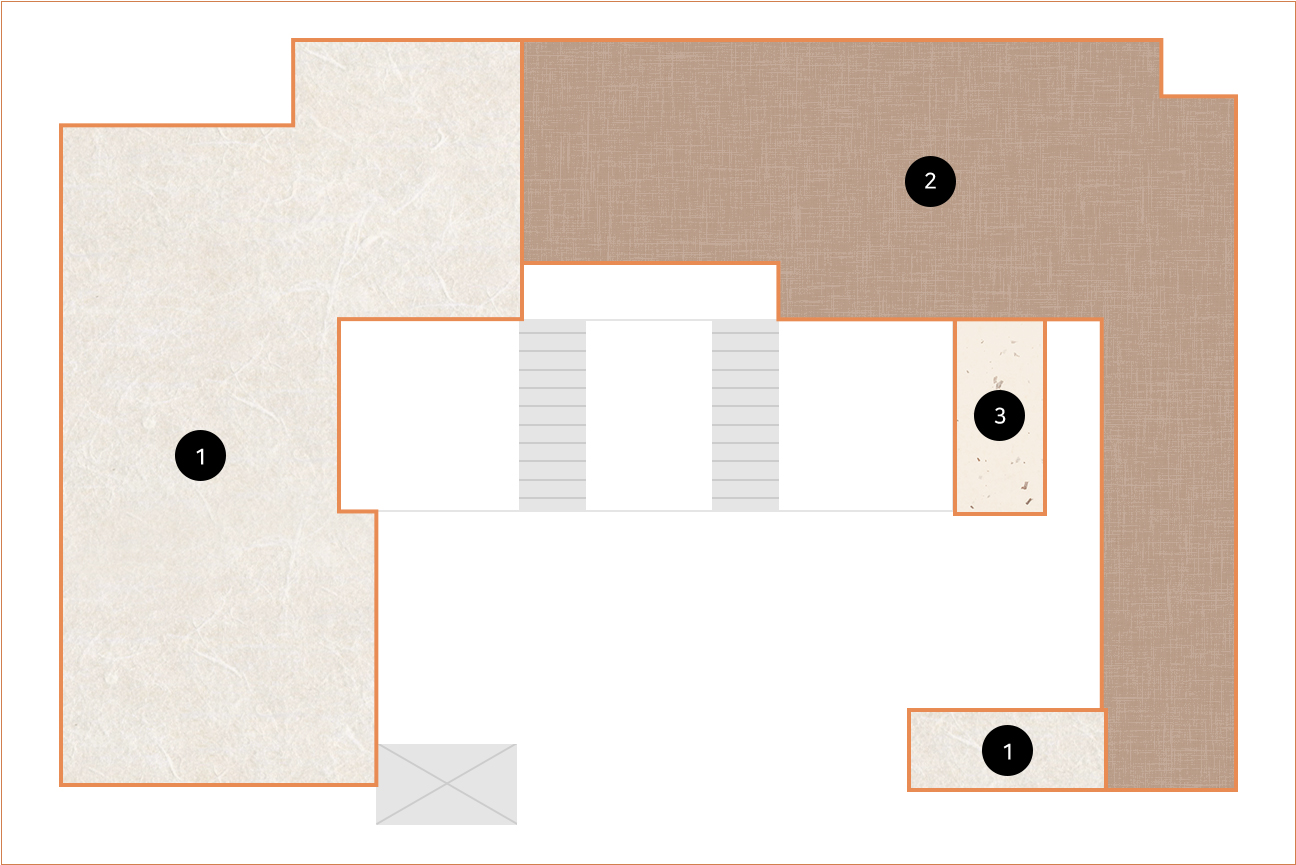
※ Click on the number to see a description
of the exhibition room.
General Paintings
You can encounter the masters of Korean painting from the Joseon dynasty, such as Jeong Seon and Yang Gi-hun, to modern painters like Lee Han-bok, No Su-hyeon, and Kim Gi-chang. This gallery allows you to read the characteristics and trends of Korean painting history by era.
Folk Paintings
Folk paintings are paintings of various materials such as flowers, birds, fish, Scholar’s Utensils, letters, hunting, and gods with free techniques. Folk paintings, which contain simple wishes to bring good luck, are full of free imagination, satire, and humor.
Buddhist Paintings
Buddhist paintings, drawn to help understand the teachings of Buddhism, reveal the world of Buddhist faith and the afterlife imagined by ancient people. Looking at the underworld in Siwangdo, we can reflect on the meaning of encouraging good and punishing evil. It also tells us that life and death are not different but connected as one.
Meet a brilliant day
-
01
A day in an ancient village -
02
A day at Byeokrando in Goryeo -
03
A day in Joseon's potter -
04
A day dreamed by a Joseon scholar -
05
Days of war and conflict -
06
The era of folk paintings and real landscape painting -
07
Yesterday and tomorrow in Songam
- Paleolithic Age
- Neolithic Age
- Bronze Age
-
During the Paleolithic Age, there was no concept of a village,
and people lived by building simple huts in caves or by riversides in groups. -
In the Neolithic Age, clan villages were formed.
People began to settle near rivers or the sea and lived in small cone-shaped houses. -
In the Bronze Age, people lived in villages on hills.
They surrounded their villages with fences and dug ditches to prevent outsiders from easily entering.
Grand funeral and impressive grave
The village chief who was the spiritual leader of the village, has passed away.
He was the one who raised the village to the richest and safest place in the neighborhood.
As they learned new technologies and made various tools, the village has become a place
where you don't have to worry about the cold, ferocious animals, or food.
However, as the village became prosperous, there were people who coveted their food and hunting grounds.
Therefore, the villagers agreed to show the strength of their village at this funeral.
On the day of the funeral, people prayed for the village chief to be happy in the other world.
And they hoped with one heart that he would continue to take care of the village without forgetting it.
Types of tomb
